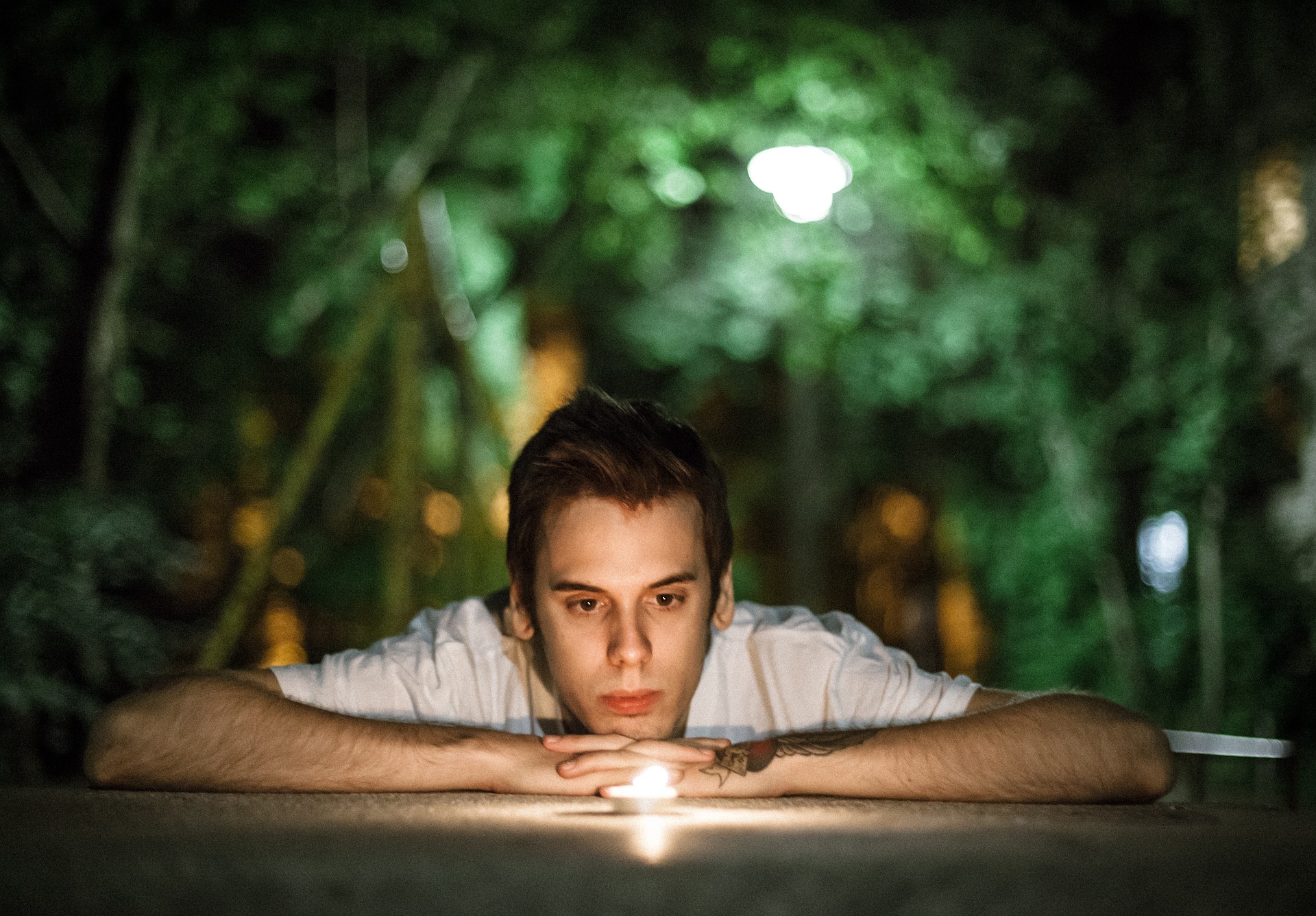Unveiling the Enigma of Reduplicative Paramnesia: A Journey into the Realm of Misplaced Familiarity

Reduplicative Paramnesia, a rare and perplexing neurological condition, conjures up a world of duality where familiar surroundings transform into uncanny replicas. It’s a disorienting labyrinth where reality and illusion intertwine, leaving individuals grappling with the unsettling perception of doubled existences.
While the causes of reduplicative paramnesia are still being unraveled, it’s often associated with neurological conditions such as Alzheimer’s disease, stroke, and traumatic brain injury. These conditions can disrupt the delicate balance of brain networks responsible for memory formation and retrieval.
Despite its challenges, reduplicative paramnesia offers valuable insights into the intricate workings of the human mind. It highlights the profound influence of memory on our perception of reality and underscores the interconnectedness of brain regions involved in memory processing.
As researchers delve deeper into this fascinating phenomenon, we gain a clearer understanding of the complexities of memory and the remarkable resilience of the human brain.
Reduplicative Paramnesia Symptoms
Reduplicative paramnesia, a rare and fascinating neurological condition, casts a veil of perplexity over the familiar, transforming ordinary surroundings into uncanny doppelgangers. It’s a labyrinth of misconstrued perceptions, where the boundaries between reality and illusion blur, leaving individuals grappling with the unsettling belief that their surroundings have been replicated.
This extraordinary phenomenon manifests in the unwavering belief that a place, person, or event has been duplicated, existing simultaneously in multiple locations. It’s akin to a shattered mirror, casting fragmented reflections of the world around us, creating a disorienting tapestry of reality and illusion.
Imagine a patient convinced that their home exists in two separate cities, each an identical replica of the other. Or a traveler who insists that their hotel room is not theirs but a perfect copy in another country. These are just a few examples of the perplexing duplication that characterize reduplicative paramnesia.
The symptoms of Reduplicative paramnesia are often categorized into three distinct forms:
1. Place Reduplication

- In a disorienting twist of fate, individuals with place reduplication find themselves ensnared in a labyrinth of replicated realities, where familiar surroundings morph into uncanny doppelgangers, challenging their grasp on the essence of place and identity.
- The boundaries of reality blur and distort as place reduplication takes hold, transforming mundane locations into enigmatic mirages, leaving individuals grappling with the unsettling perception that their homes, towns, and even hospital rooms exist in multiple, simultaneous dimensions.
- A perplexing tapestry of doubled realities unfolds as place reduplication takes center stage, casting a veil of uncertainty over the familiar, where the comforting confines of home become a labyrinth of replicated landscapes, each claiming to be the true haven.
2. Chimeric Assimilation
- In a bizarre fusion of realities, chimeric assimilation paints a distorted canvas of memories, where familiar places become grotesque amalgamations, their distinct identities merging into a disorienting blend of the past and present.
- A mind-bending puzzle unfolds as chimeric assimilation takes hold, weaving familiar landmarks into surreal tapestries of memories, where childhood homes intertwine with current surroundings, creating a paradoxical fusion of time and space.
- The boundaries of reality dissolve into a kaleidoscopic swirl of memories as chimeric assimilation takes center stage, transforming ordinary places into bizarre hybrids, where the past bleeds into the present, creating a disorienting labyrinth of familiar yet alien landscapes.
3. Extravagant Spatial Localization
- In a fantastical twist of perception, extravagant spatial localization catapults familiar places into realms of the extraordinary, where homes transcend mundane boundaries and materialize in the ocean’s depths or the moon’s cratered surface.
- The fabric of reality unravels as extravagant spatial localization takes hold, defying the laws of physics and transporting familiar surroundings to far-fetched destinations, where homes take root in uncharted territories, challenging the notion of spatial boundaries.
- A surreal odyssey unfolds as extravagant spatial localization takes center stage, defying the confines of reality and anchoring familiar places in fantastical locales, where homes become celestial oases and hospital rooms transform into nautical havens, blurring the lines between the ordinary and the extraordinary.
Causes of Reduplicative Paramnesia
1. Neurological Disorders
- Reduplicative paramnesia is often associated with neurological disorders such as Alzheimer’s disease, stroke, and traumatic brain injury. These conditions can disrupt the delicate balance of brain networks responsible for memory formation, retrieval, and spatial orientation.
- Alzheimer’s disease, a progressive neurodegenerative disorder, causes the gradual decline of cognitive functions, including memory. In some cases, individuals with Alzheimer’s may develop reduplicative paramnesia, believing that familiar places or people exist in multiple locations.
- A stroke, a sudden interruption of blood flow to the brain, can damage specific brain regions involved in memory processing and spatial navigation. This damage can contribute to the development of reduplicative paramnesia, leading to the perception of duplicated surroundings.
- Traumatic brain injury (TBI), a sudden trauma to the head that disrupts the normal functioning of the brain, can also lead to reduplicative paramnesia. The severity of the TBI and the brain regions affected can influence the likelihood and severity of reduplicative symptoms.
2. Memory Disruptions

- At the heart of reduplicative paramnesia lies a disruption in the brain’s ability to integrate new memories with existing ones. This disconnect leads to a fragmented sense of reality, where familiar places and people are perceived as distinct entities in multiple locations.
- The formation of new memories involves a complex interplay of brain regions responsible for encoding, storage, and retrieval. Disruptions in these processes can lead to memory errors and inconsistencies, potentially contributing to reduplicative paramnesia.
- Hippocampal dysfunction, particularly in the right hippocampus, has been implicated in reduplicative paramnesia. The hippocampus plays a crucial role in spatial memory and navigation, and damage to this region can disrupt the ability to accurately perceive and encode spatial relationships.
- Disruptions in the parahippocampal gyrus, another brain region involved in memory and spatial navigation, have also been linked to reduplicative paramnesia. This region is involved in processing contextual information and integrating new memories with existing ones.
3. Right Frontotemporal Dysfunction
- Studies suggest that damage to specific regions of the brain, particularly the right frontal and temporal lobes, may play a crucial role in the development of reduplicative paramnesia. These regions are essential for memory processing, spatial navigation, and self-awareness.
- The right frontal lobe involves executive functioning, including planning, organizing, and decision-making. Damage to this region can impair the ability to organize memories and distinguish between real and imagined experiences, potentially contributing to reduplicative paramnesia.
- The right temporal lobe is involved in memory formation and retrieval, particularly for episodic memories related to personal experiences. Damage to this region can disrupt the ability to accurately store and retrieve memories, leading to inconsistencies and potentially reduplicative experiences.
- The right temporoparietal junction (TPJ), located at the intersection of the temporal and parietal lobes, is involved in spatial navigation and self-awareness. Damage to this region can disrupt the ability to accurately perceive and orient oneself in space, potentially contributing to reduplicative paramnesia.
4. Psychiatric Conditions
- In rare instances, reduplicative paramnesia may emerge in individuals with certain psychiatric conditions, such as schizophrenia or delusional disorder. In these cases, the phenomenon may stem from underlying perception and reality testing disturbances.
- Schizophrenia, a chronic psychotic disorder, is characterized by disturbances in perception, thought, and behaviour. Individuals with schizophrenia may experience hallucinations, delusions, and disorganized thinking, which can lead to misinterpretations of reality and potentially reduplicative experiences.
- Delusional disorder, a persistent false belief in one or more ideas, can also manifest in reduplicative paramnesia. Individuals with delusional disorder may hold firm beliefs that place or people have been duplicated, even in the absence of any supporting evidence.
- Distinguishing reduplicative paramnesia arising from neurological causes versus psychiatric conditions requires careful evaluation of the patient’s overall mental status, medical history, and neuropsychological profile.
5. Sensory Deprivation
- Prolonged sensory deprivation, such as isolation or confinement, has been linked to the emergence of reduplicative paramnesia. This phenomenon may be attributed to the brain’s attempts to compensate for the lack of external stimuli by creating internal replicas of familiar surroundings.
- Sensory deprivation can alter brain activity and perception, increasing suggestibility and a heightened sensitivity to internal stimuli. This heightened suggestibility may make individuals more susceptible to misinterpreting internal representations of familiar surroundings as genuine external realities.
- In extreme cases of sensory deprivation, individuals may experience hallucinations or vivid dreams that incorporate elements of their past experiences. These internal experiences may blend with their perception of reality, potentially leading to reduplicative paramnesia.
6. Substance Abuse
The use of certain substances, such as hallucinogens or psychoactive drugs, can temporarily disrupt brain function and lead to perceptual disturbances. In rare cases, these disruptions may manifest as reduplicative paramnesia, with individuals experiencing duplicated surroundings.
Reduplicative Paramnesia Diagnosis
1. Detailed Medical History
A comprehensive medical history is crucial to gather essential information about the patient’s overall health, past neurological conditions, medications, substance use, and any prior psychiatric diagnoses. This information can provide valuable clues about potential underlying causes.
2. Neurological Examination
A neurological examination assesses the patient’s mental status, motor skills, sensory perception, coordination, and reflexes. This evaluation can help detect any underlying neurological abnormalities contributing to reduplicative paramnesia.
3. Neuropsychological Testing
Neuropsychological testing delves into the patient’s cognitive abilities, including memory, attention, language, and executive functioning. This assessment can identify specific cognitive deficits that may play a role in developing reduplicative paramnesia.
4. Brain Imaging Studies
Brain imaging studies, such as MRI or CT scans, provide valuable insights into the structural integrity of the brain. These scans can reveal abnormalities in specific brain regions, such as the right frontal and temporal lobes, often associated with reduplicative paramnesia.
5. Ruling Out Other Potential Causes
A critical aspect of the diagnostic process is to rule out other potential causes of the patient’s symptoms. This may include excluding psychiatric disorders, substance abuse, sensory deprivation, or other neurological conditions that can mimic reduplicative paramnesia.
Treatment of Reduplicative Paramnesia
1. Addressing Underlying Neurological Conditions
For individuals with reduplicative paramnesia associated with neurological disorders such as Alzheimer’s disease, stroke, or traumatic brain injury, the primary focus of treatment is to manage the underlying condition. This may involve medications, therapy, and lifestyle modifications to optimize brain function and reduce symptom severity.
2. Cognitive Rehabilitation
Neuropsychological assessment can identify specific cognitive deficits that may contribute to reduplicative paramnesia. Targeted cognitive rehabilitation programs can help strengthen memory, attention, and spatial orientation skills, potentially reducing the frequency and intensity of reduplicative experiences.
3. Reality Orientation
Reality orientation techniques can help individuals distinguish between real and imagined surroundings. This may involve consistent reminders of the patient’s location, using familiar objects and landmarks, and maintaining a structured daily routine.
4. Sensory Enrichment
In cases where sensory deprivation may contribute to reduplicative paramnesia, sensory enrichment therapies can be beneficial. This may involve exposure to various stimuli, such as music, art, and social interactions, to enhance cognitive engagement and reduce the risk of misperceptions.
5. Psychiatric Interventions
For individuals with reduplicative paramnesia associated with psychiatric conditions such as schizophrenia or delusional disorder, treatment may involve antipsychotic medications and psychotherapy to address underlying symptoms and reduce the intensity of reduplicative experiences.
6. Supportive Care
Reduplicative paramnesia can cause significant distress and social isolation. Providing emotional support, individual and group therapy, and family education can help individuals cope with the condition and maintain a sense of well-being.
7. Ongoing Research

As research into the underlying mechanisms of reduplicative paramnesia progresses, we may uncover novel treatment approaches that target specific neurological pathways and cognitive processes. This could lead to more effective and personalized treatment strategies.
Here are 10 famous personalities who may have suffered from reduplicative paramnesia:
1. Leopoldo Fregoli, Italian actor
Renowned for his uncanny ability to impersonate various characters, Fregoli’s remarkable talent may have stemmed from an underlying predisposition for reduplicative paramnesia, allowing him to seamlessly adopt and embody multiple identities.
2. Henry Fuseli, Swiss-English Painter
Fuseli’s surreal and dreamlike paintings often featured fragmented figures and distorted landscapes, hinting at a possible connection to reduplicative paramnesia, where the boundaries between reality and illusion blurred in his artistic vision.
3. Salvador Dalí, Spanish Surrealist Painter
Dalí’s iconic works, such as “The Persistence of Memory” and “The Elephants,” showcased a fascination with the fluidity of time and space. These themes resonate with the disorienting experiences of reduplicative paramnesia.
4. Louis Wain, British Artist
Wain’s intricate and repetitive cat drawings, often featuring multiple cats in a single frame, could be interpreted as a manifestation of reduplicative paramnesia, where familiar objects and figures multiplied in his perception.
5. Gustav Mahler, Austrian Composer
Mahler’s symphonies, known for their complex structures and recurring motifs, may reflect an underlying predisposition for reduplicative paramnesia, where musical themes echoed and overlapped in his creative mind.
6. Fyodor Dostoevsky, Russian Novelist
Dostoevsky’s novels, often delving into themes of duality and distorted reality, could be influenced by his experiences with reduplicative paramnesia, where the boundaries between inner and outer worlds blurred.
7. Virginia Woolf, English Writer
Woolf’s stream-of-consciousness writing style, with its fluid transitions and fragmented narratives, could reflect reduplicative paramnesia, where thoughts and memories intertwine and overlap.
8. Marcel Proust, French Novelist
Proust’s masterpiece, “In Search of Lost Time,” explores the intricate interplay of memory and perception, themes that resonate with the experiences of reduplicative paramnesia, where familiar surroundings take on new and distorted meanings.
9. H.P. Lovecraft, American Horror Writer
Lovecraft’s grotesque and otherworldly tales often feature characters trapped in nightmarish realities, where familiar settings morph into unsettling doppelgangers, a concept that parallels the disorienting experiences of reduplicative paramnesia.
10. Jorge Luis Borges, Argentinian Writer
Borges’s labyrinthine stories, such as “The Aleph” and “The Library of Babel,” explore the malleability of reality and the proliferation of parallel worlds. These themes echo the experiences of reduplicative paramnesia, where familiar surroundings become duplicated and distorted.
Conclusion
Reduplicative paramnesia reminds us of the fragility of our perception, the subtle interplay between memory and reality, and the profound adaptability of the human mind. While the condition presents challenges, it also offers valuable insights into the interconnectedness of brain regions and the resilience of the human spirit.

